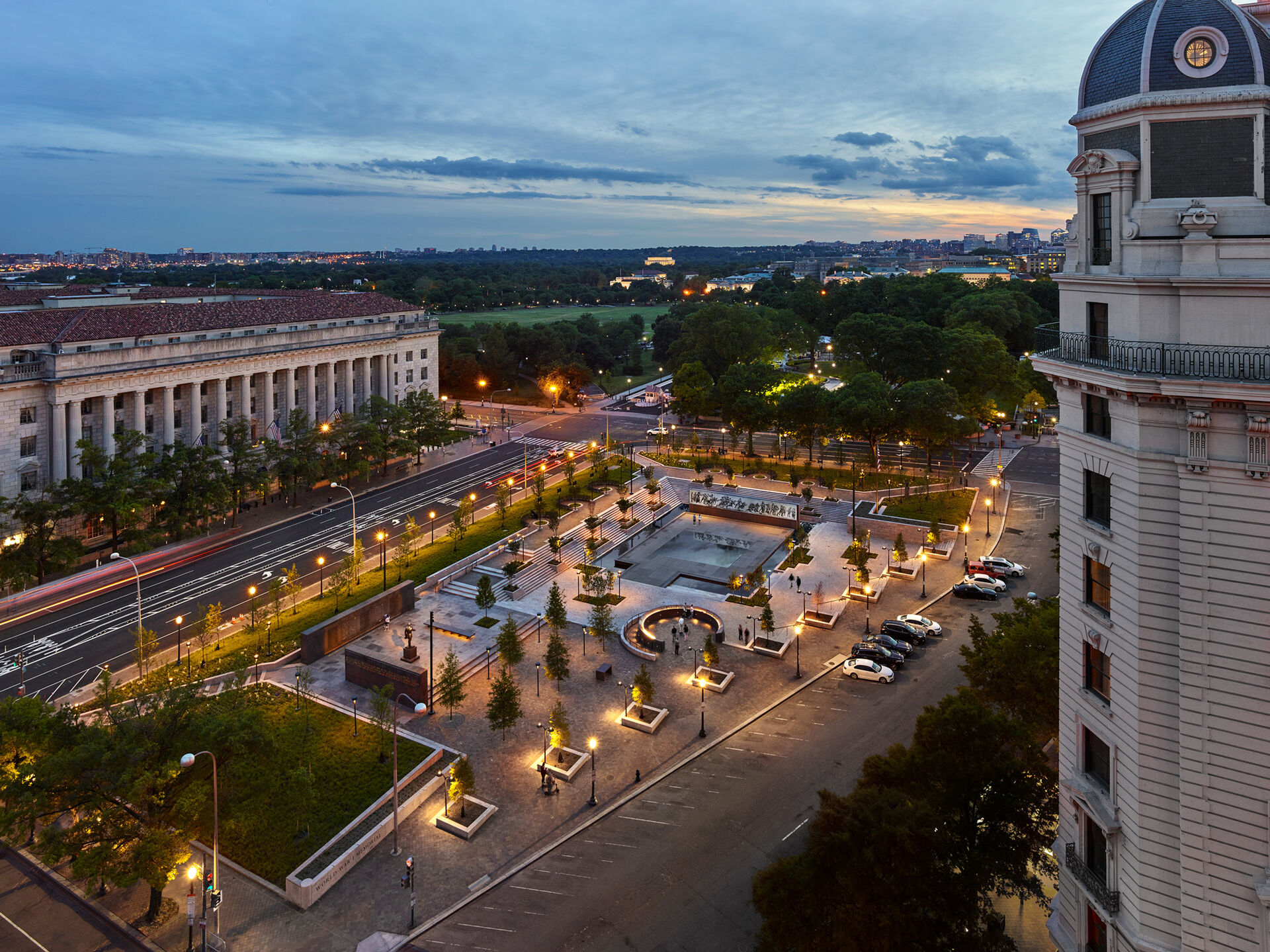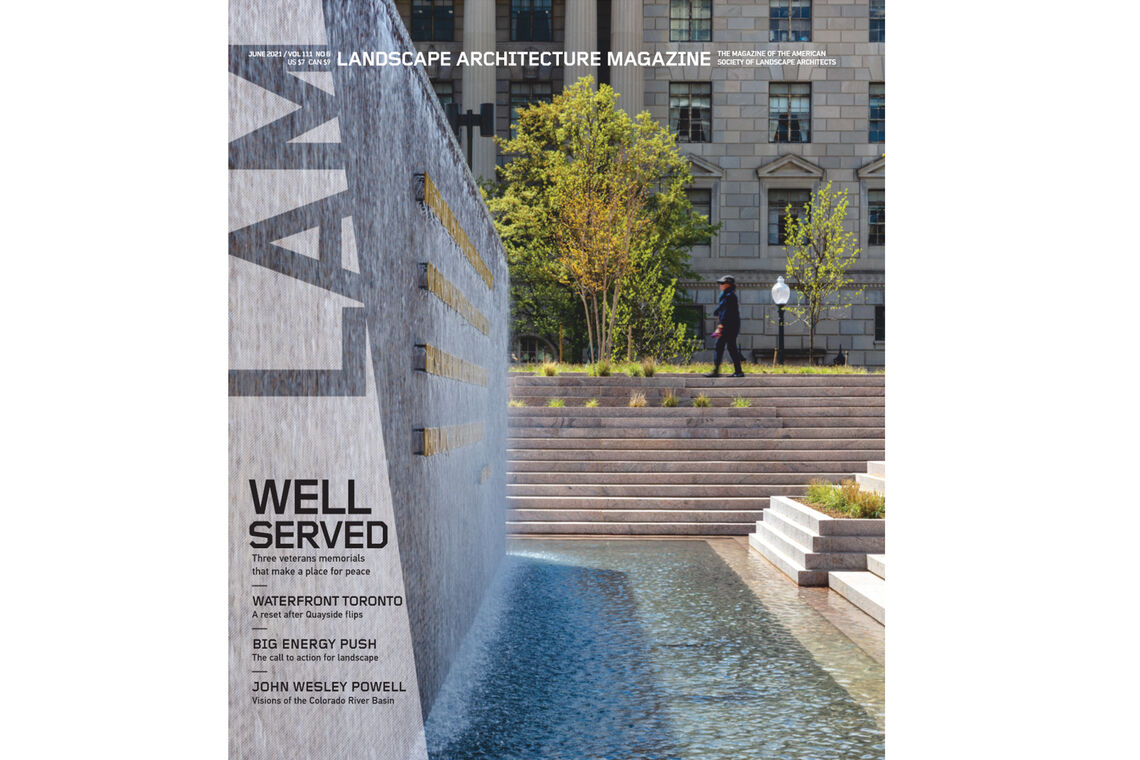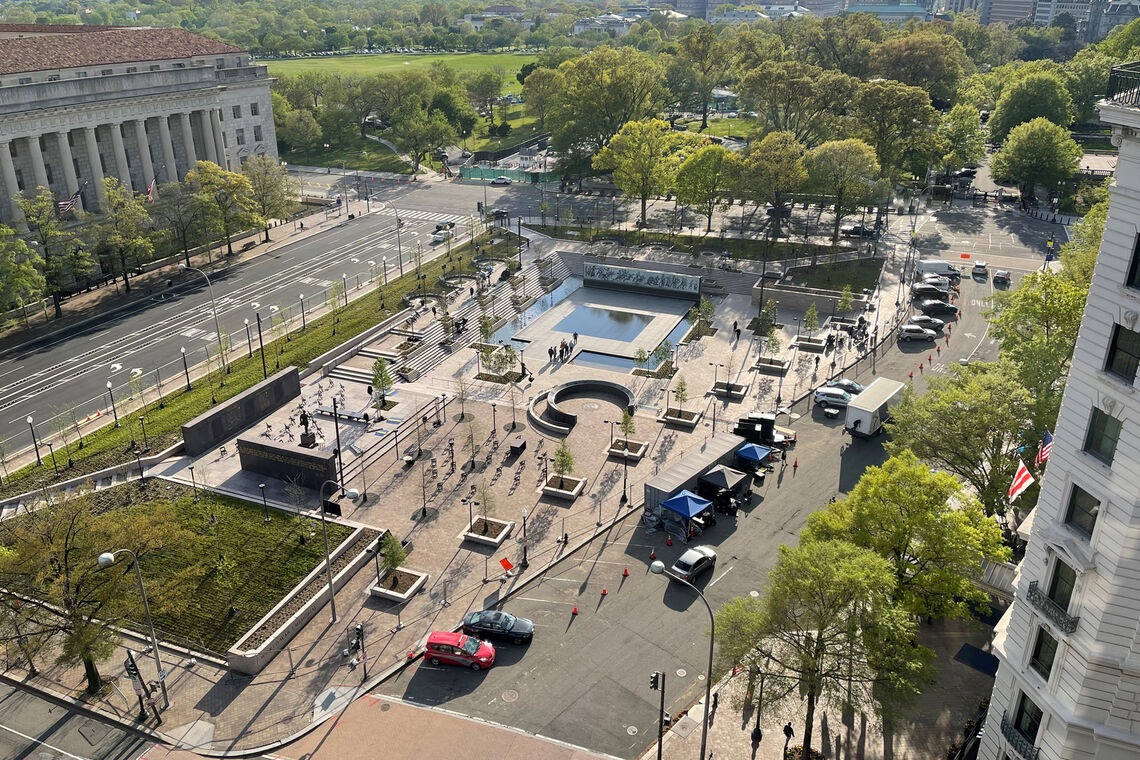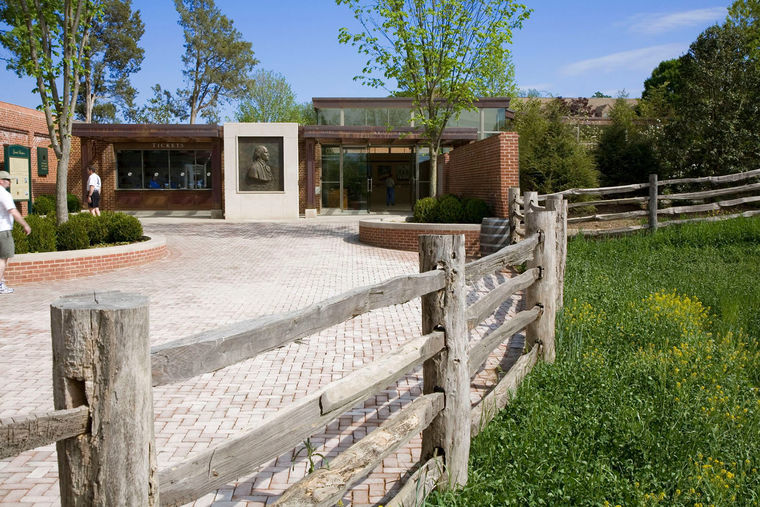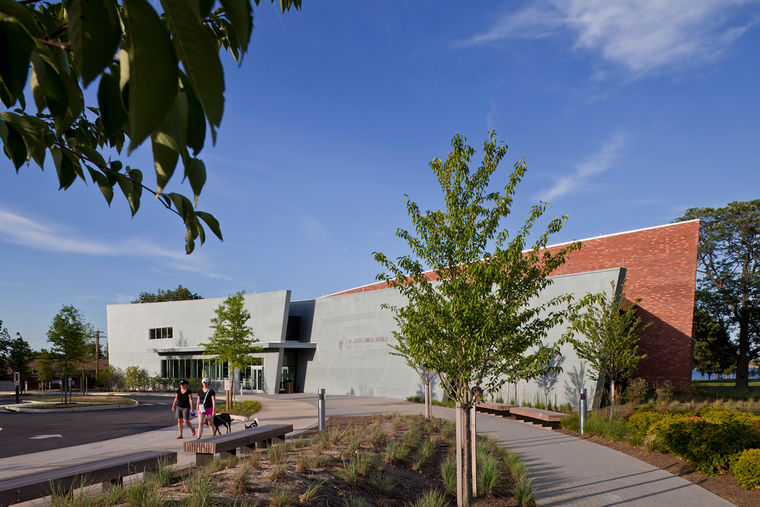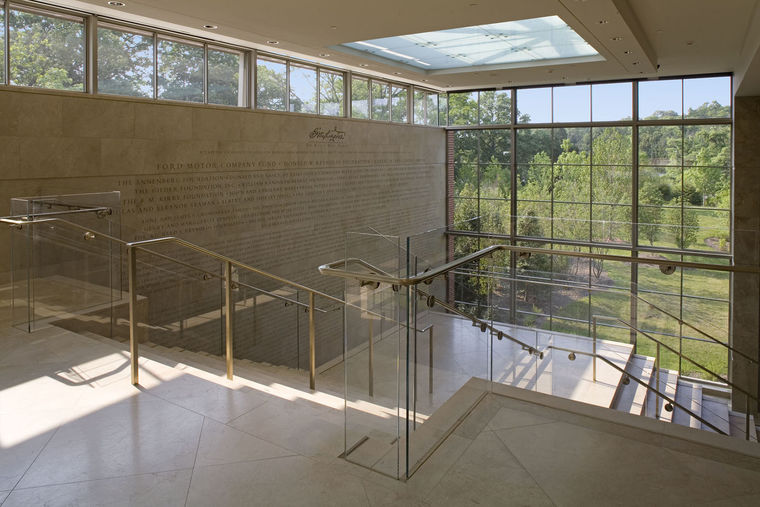The design was unanimously chosen by the competition jury after an open, two-stage international design competition that received over 350 entries. GWWO’s work as Architect-of-Record for the project included numerous National Historic Preservation Act (NHPA) Section 106 meetings and formal presentations to the Commission of Fine Arts (CFA) and National Capital Planning Commission (NCPC), as well as countless meetings with agency staffs including CFA, NCPC, DC Historic Preservation Office (HPO), and the National Park Service. The results of the firm’s extensive collaboration led to the quickest approval process for a memorial project in recent history.
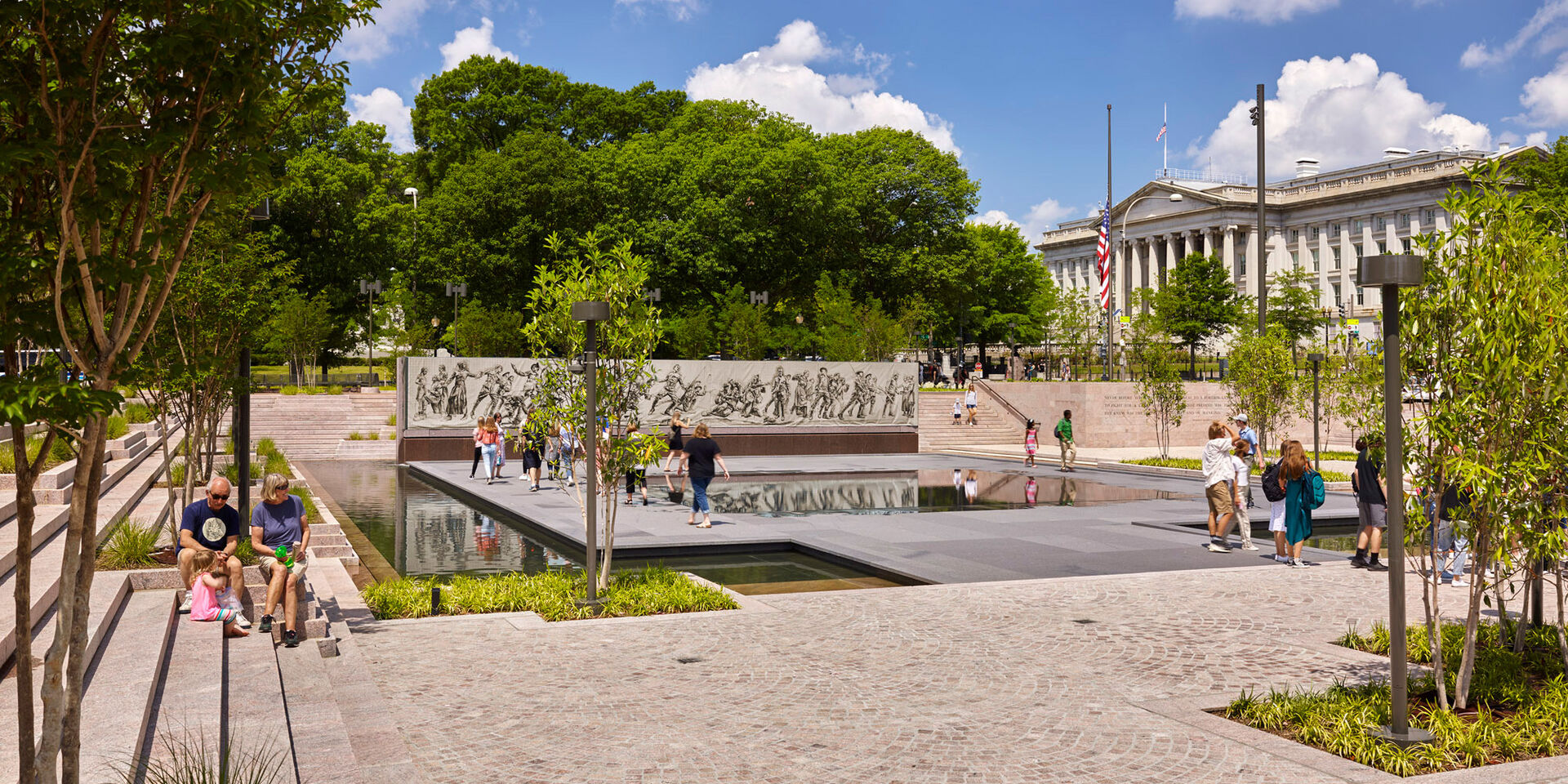
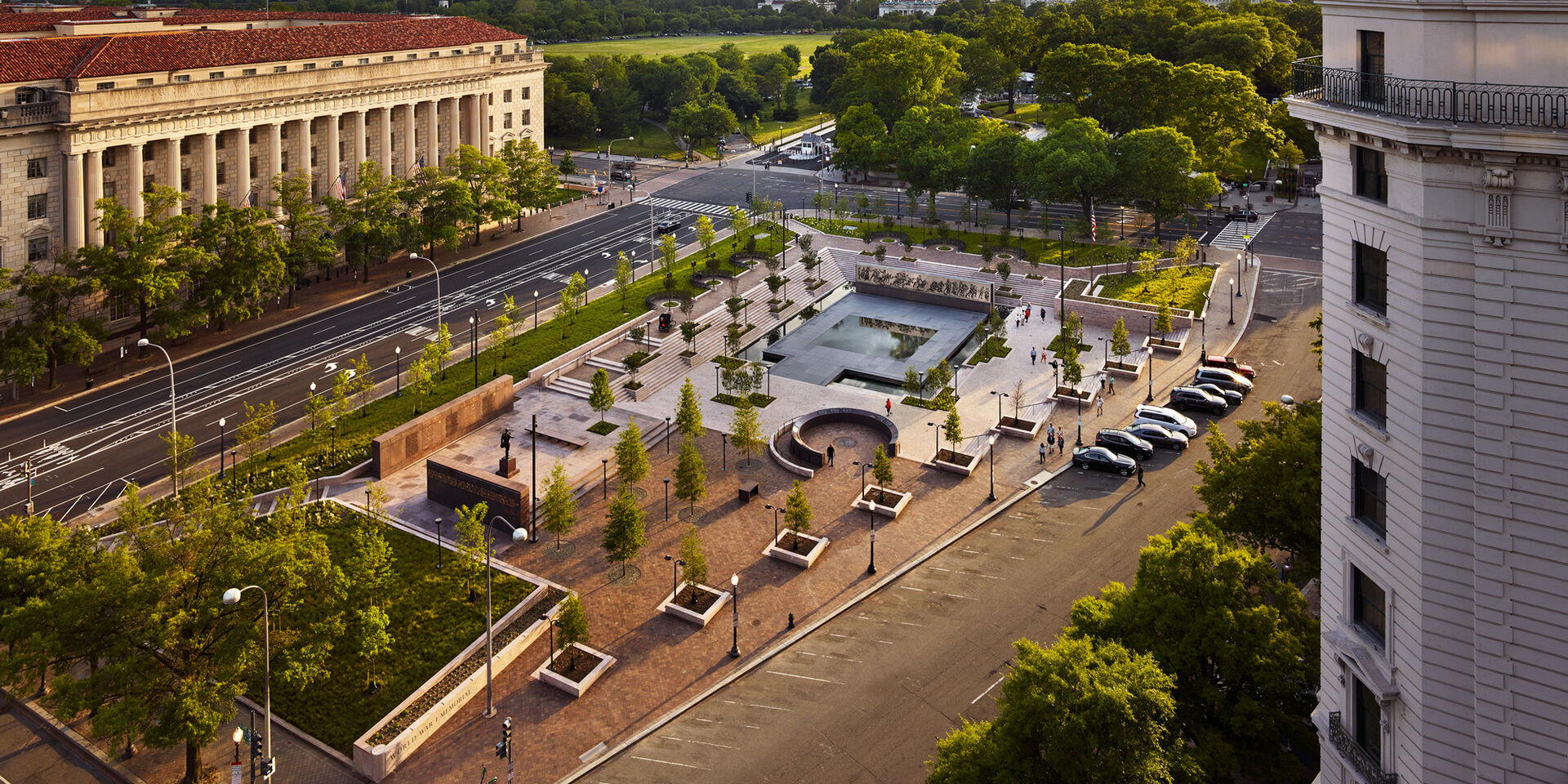
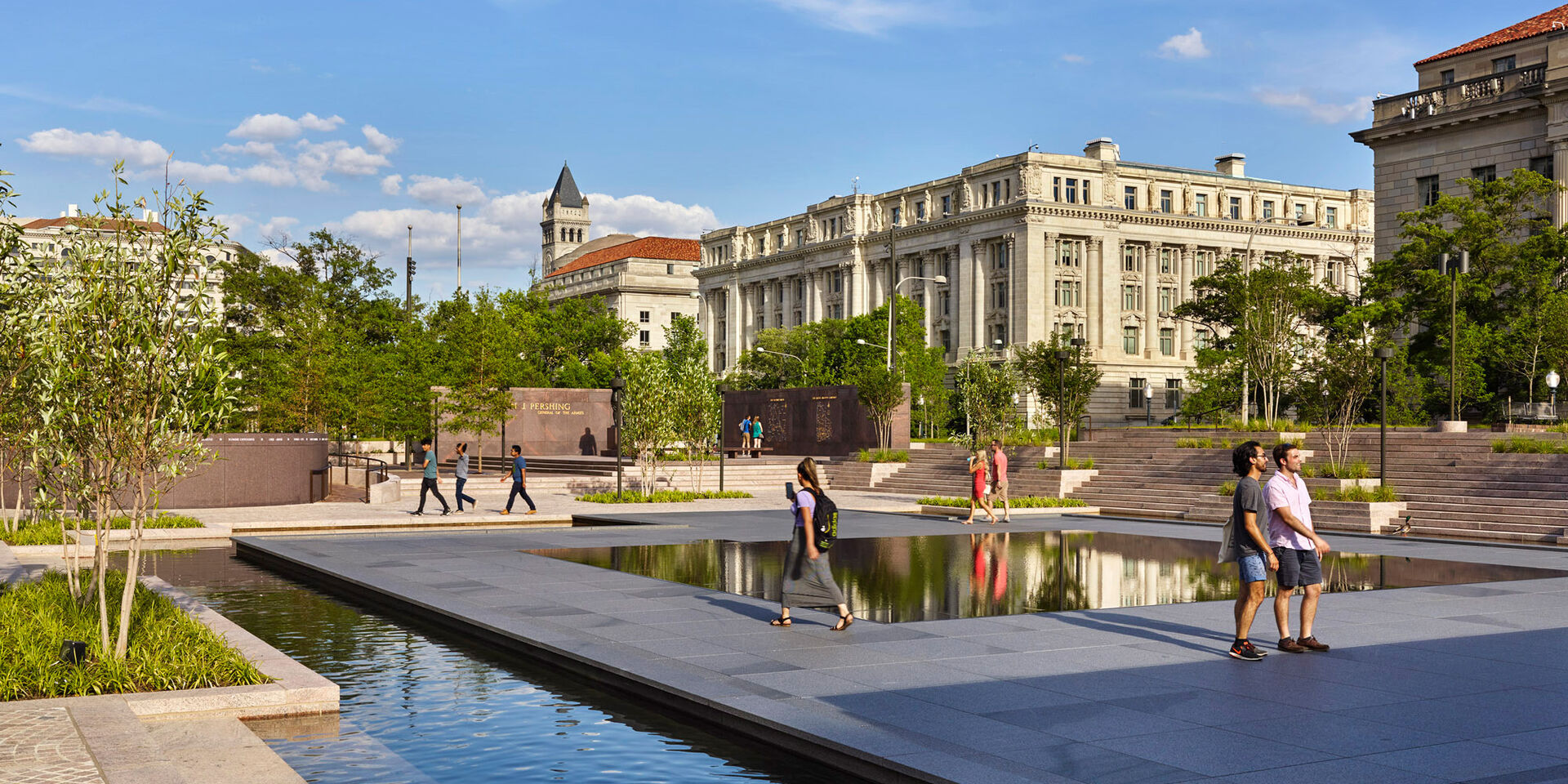
National World War I Memorial
Washington, DC
- Details
- Rehabilitation of a National Register-eligible park which includes the integration of a new memorial
- Tiered interpretation for visitors to create their own experience
- External review process with the U.S. Commission of Fine Arts, National Capital Planning Commission, DC Historic Preservation Office, and National Park Service
- Managing Firm: GWWO Architects; Lead Designer: Joe Weishaar; Sculptor: Sabin Howard; Landscape Architect: Land Collective
- Owner
- U.S. Foundation for the Commemoration of World Wars & U.S. World War One Centennial Commission
- Services
- Community Engagement, Full Design Services, Construction Administration, Building Information Modeling

Located in Washington DC’s Pershing Park, the new National World War I Memorial brings long-overdue recognition to America’s 4.7 million sons and daughters who served in the Great War. Those women and men served with the same valor and courage as the veterans of later wars already honored by national memorials, and the nation’s sacrifice was great—204,000 Americans returned home wounded, and 116,516 did not come home at all.
The new National World War I Memorial occupies a prominent place in our nation’s capital at the terminus of Pennsylvania Avenue as it approaches the grounds of the White House and opens to views of the Washington Monument and the National Mall to the south. Serving a dual function as a space of commemoration and as an urban park situated within the Pennsylvania Avenue National Historic Site, the design harmonizes these two functions with great sensitivity, providing an expanded commemorative identity while at the same time respecting the historically significant park design and offering a variety of uses.
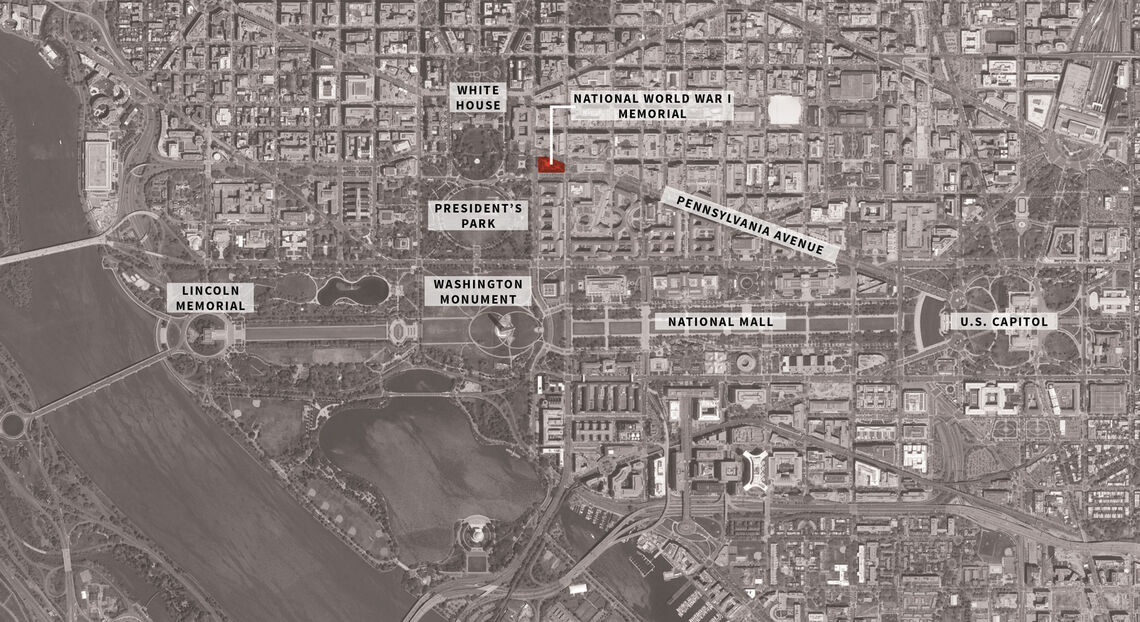
The design of the new memorial balances two works of art: the existing Pershing Memorial honoring US Army General John J. Pershing, and a 60-foot-long, 10-foot-high bronze figure sculpture by artist Sabin Howard located at the terminus of a revivified reflection pool. Titled “A Soldier’s Journey,” the 38-figure composition serves as the centerpiece of the renovated 1.76-acre landscape by telling the story of a solider who leaves his family, survives the trials of war, and returns home. A new fountain conveying the country’s search for peace inscribed with the words of Archibald MacLeish provides a place of reflection and remembrance.
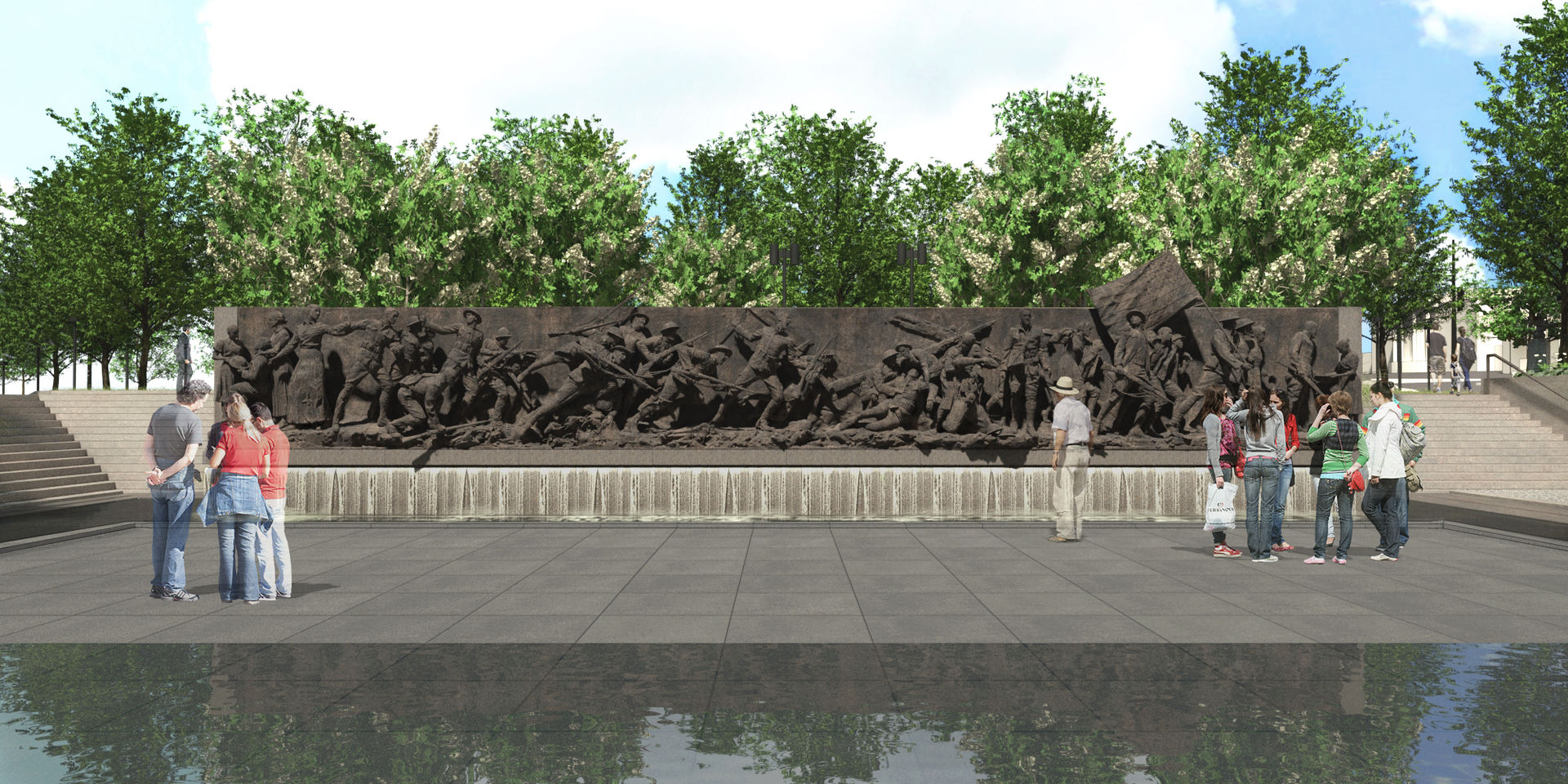
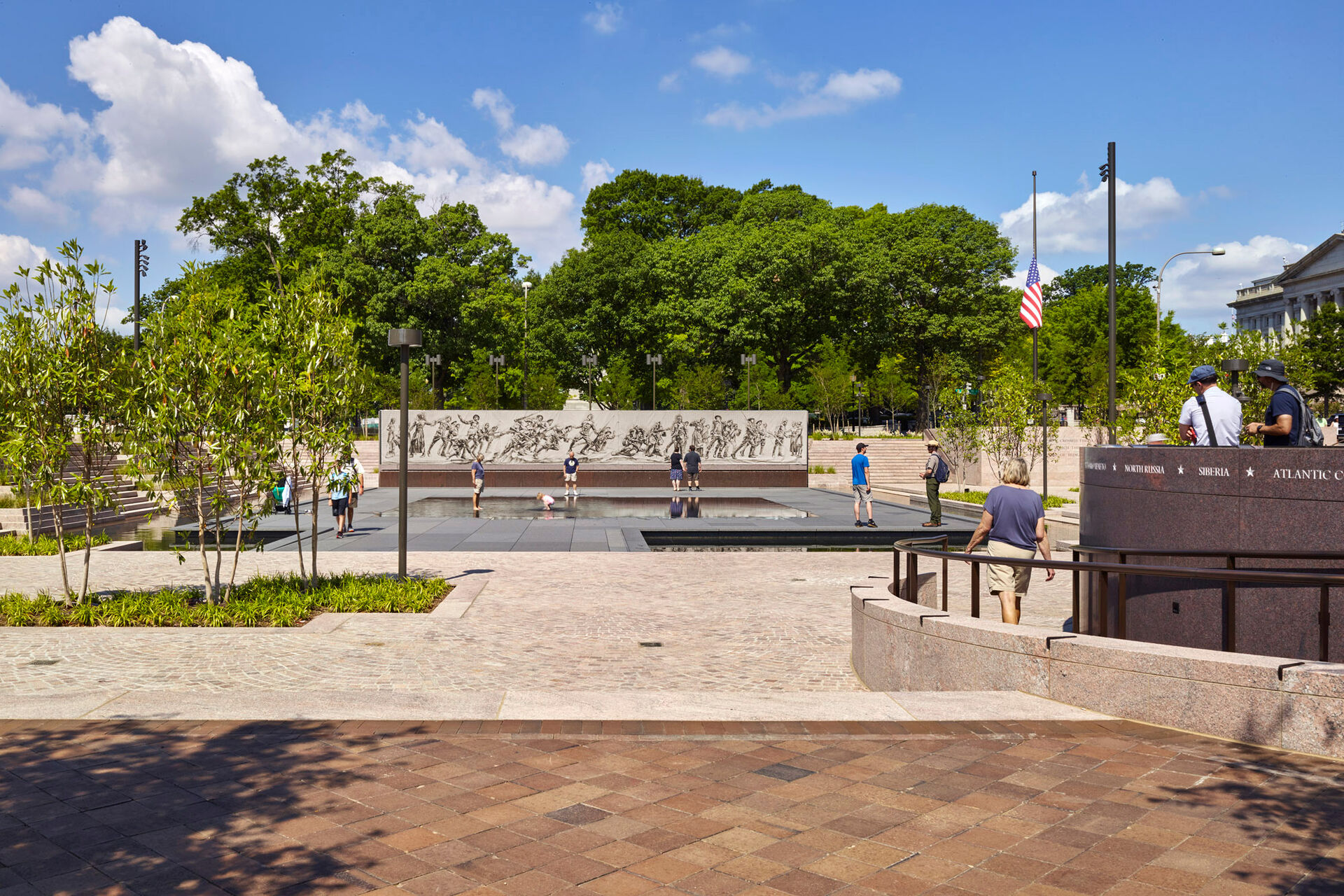
“We leave you our deaths: Give them their meaning:
Give them an end to the war and a true peace:
Give them a victory that ends war and a peace afterwards: Give them their meaning.
We were young, they say. We have died. Remember us.”
—Archibald MacLeish

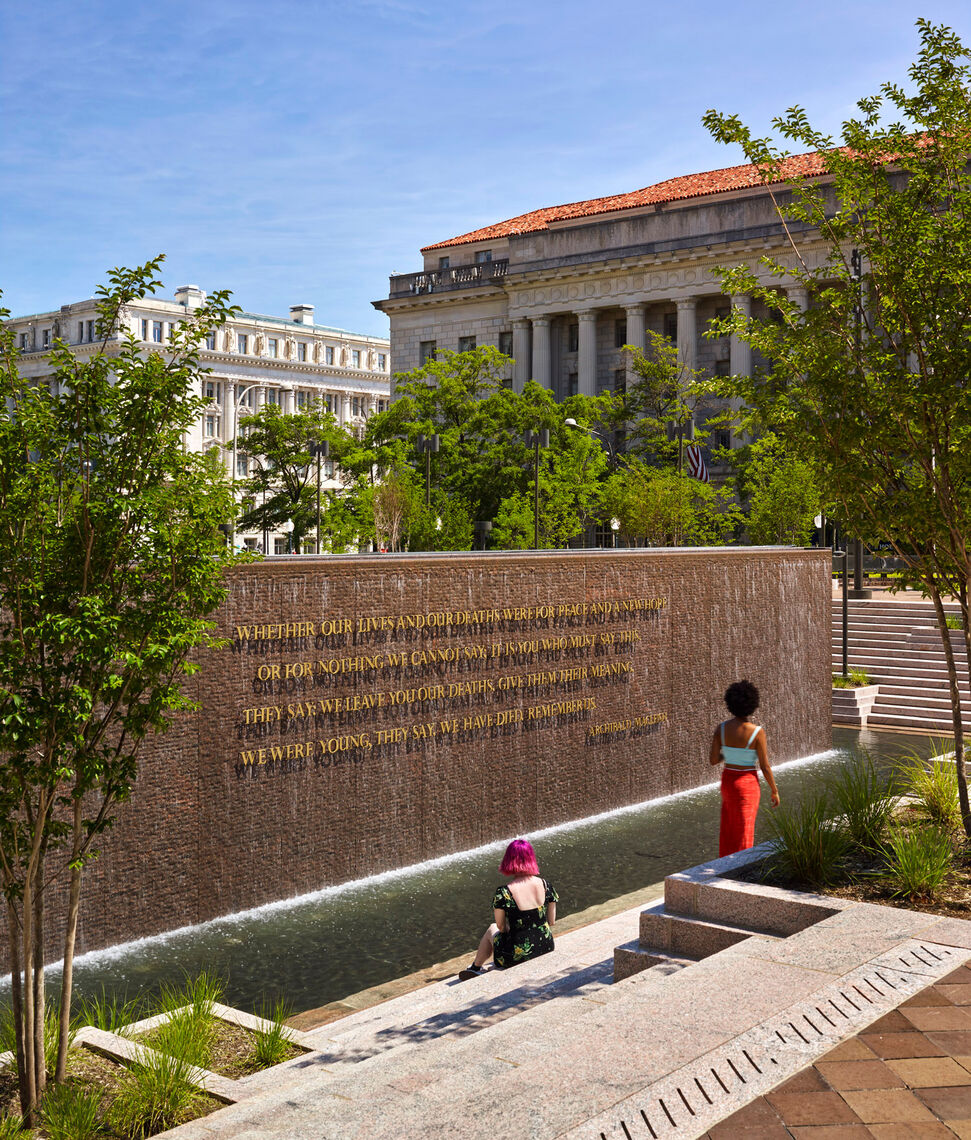
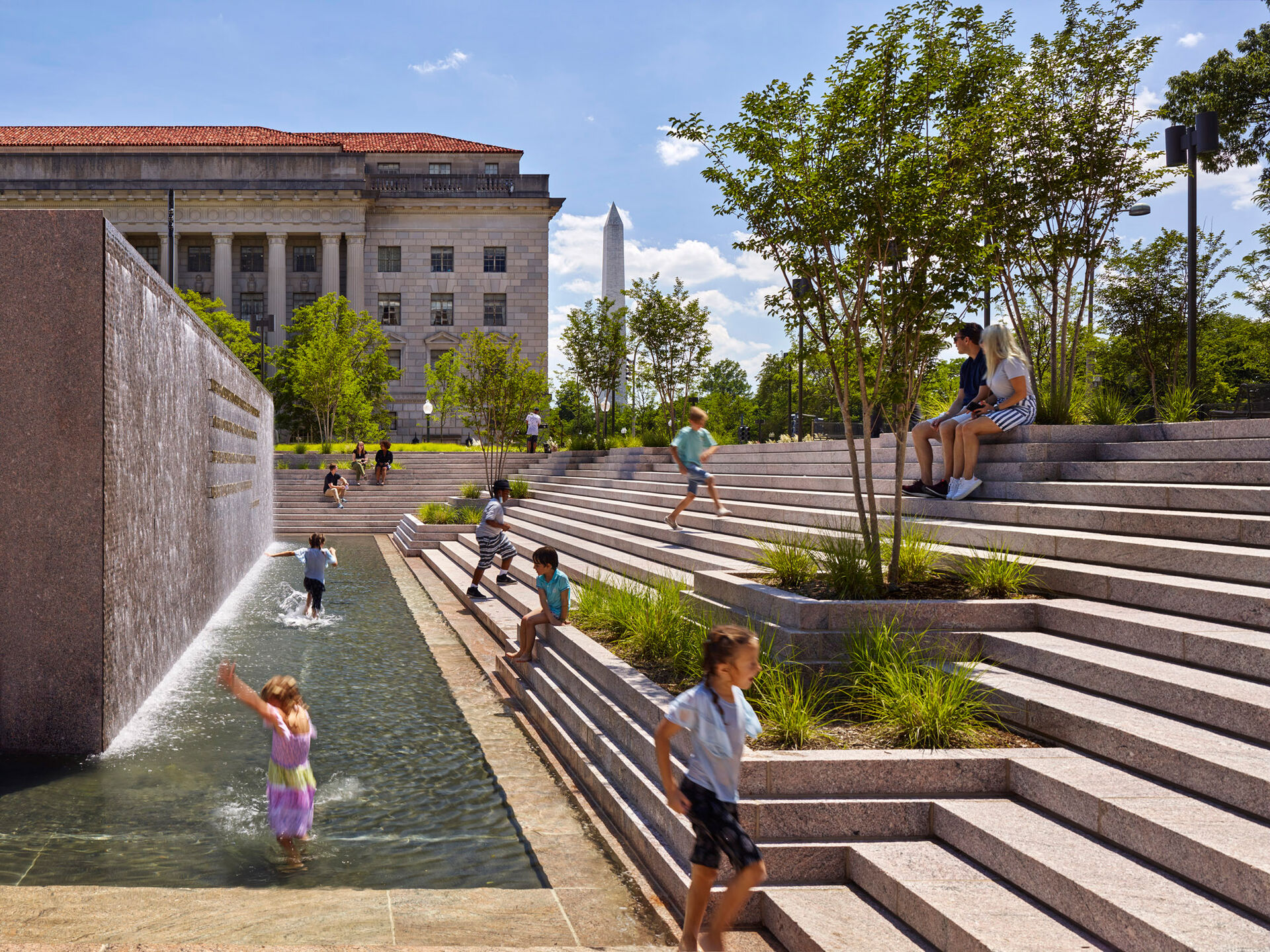
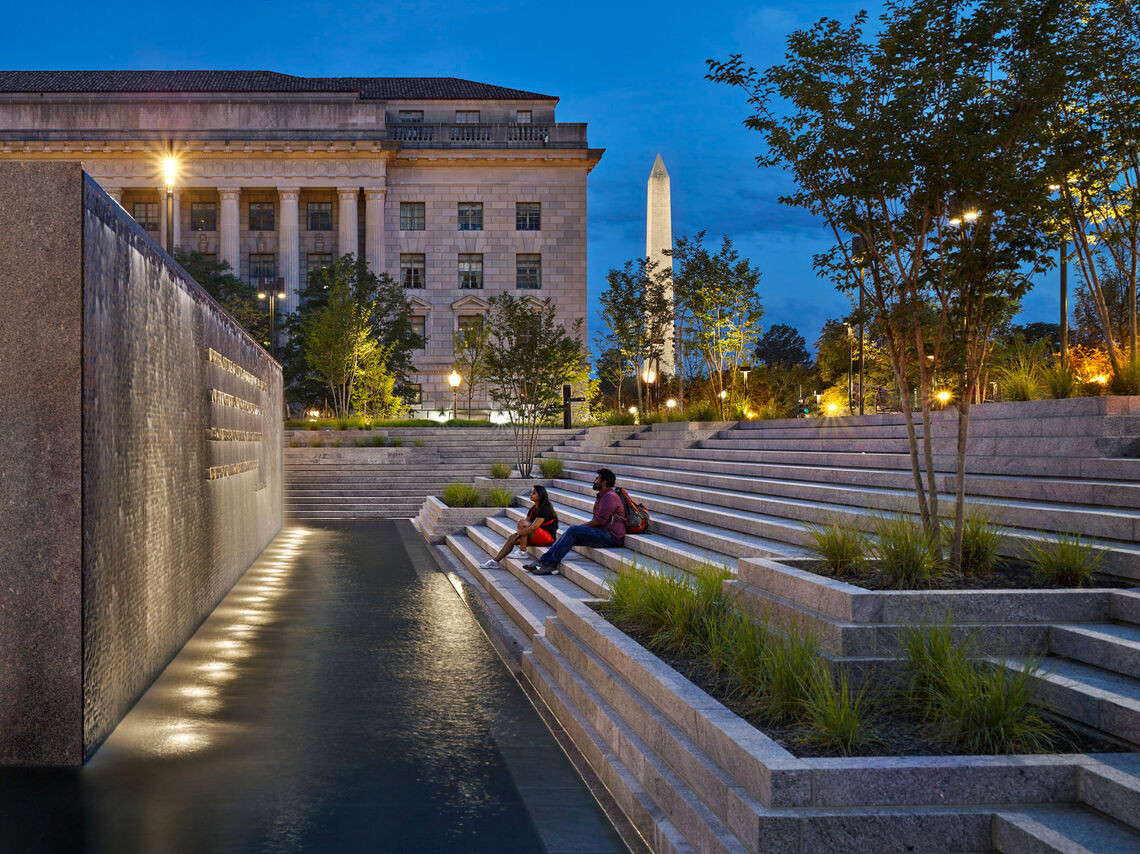
New horticulture frames the memorial and infuses the park with social purpose, while new circulation connections help the park host more active space.
Tiers of interpretation—physical commemoration (statue, sculpture, and fountain), physical interpretation (belvedere and inscribed quotations), and tech interpretation (an interactive app and QR code)—allow visitors to experience the memorial park at their desired level.
Awards
NAIOP DC|MD Award of Merit
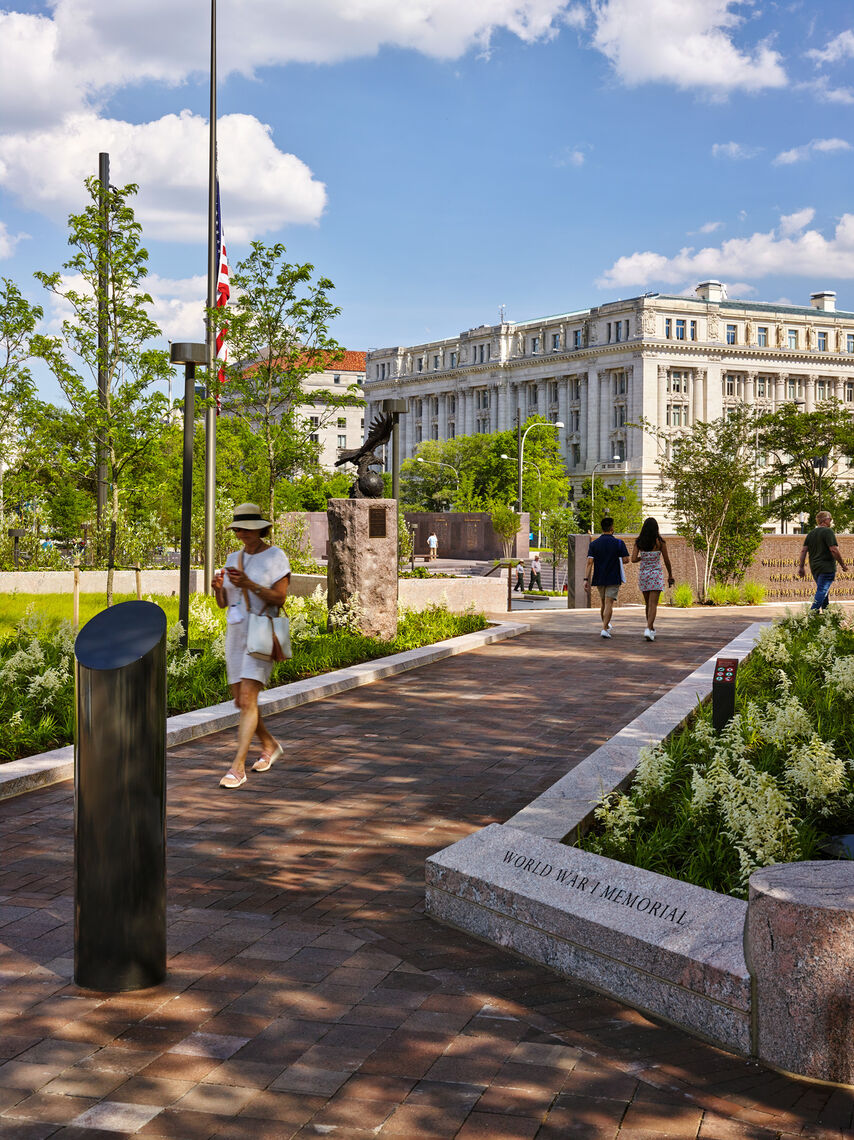
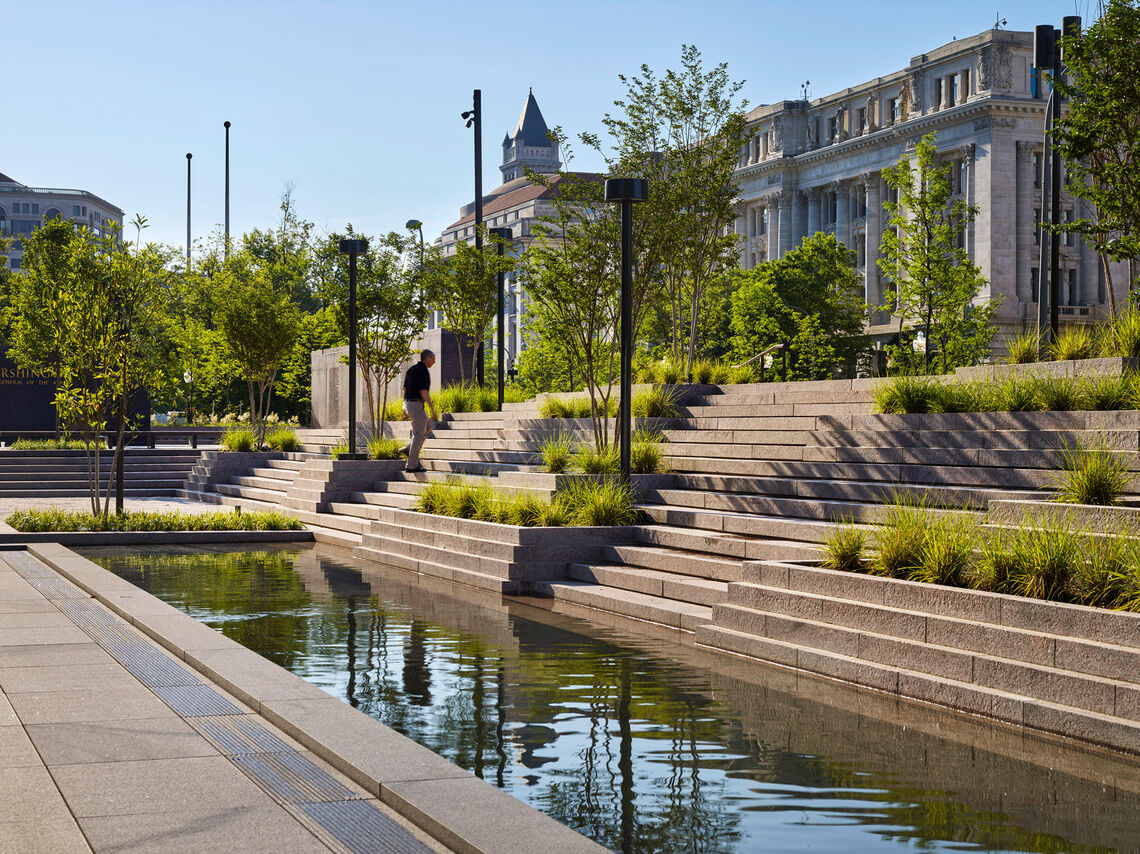
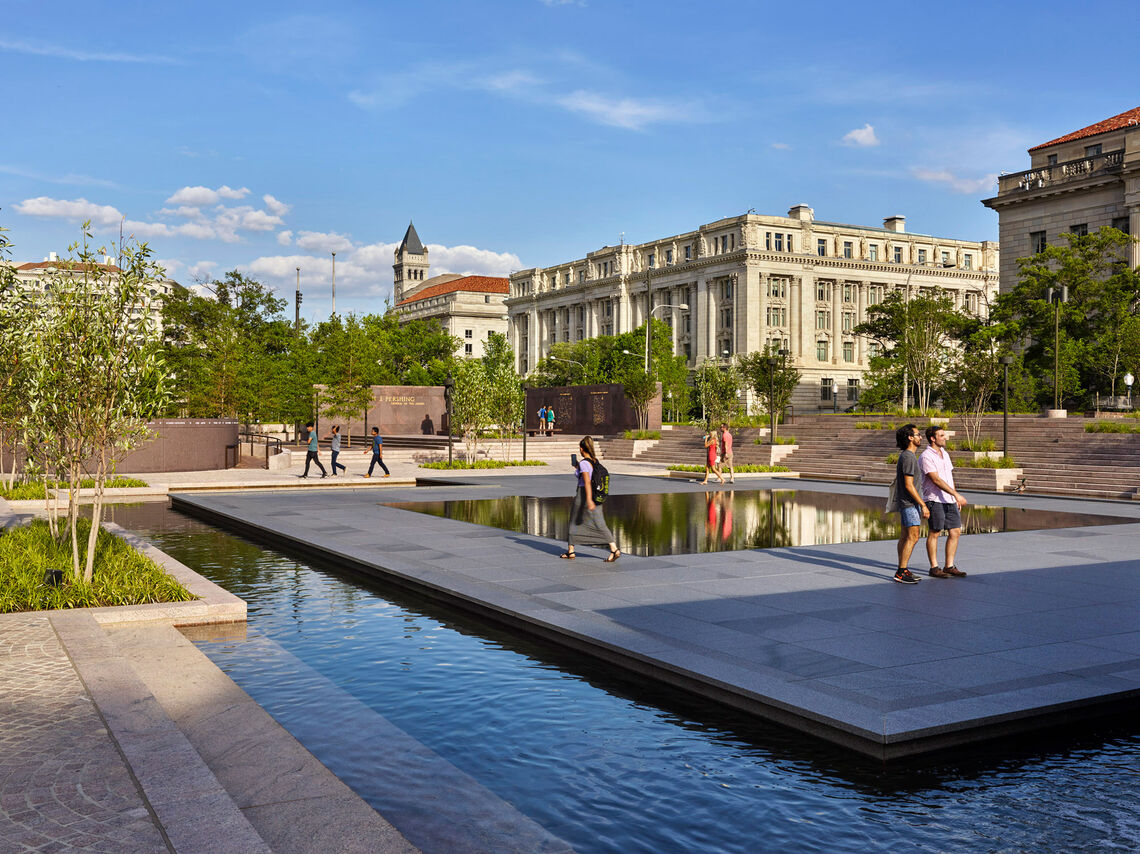
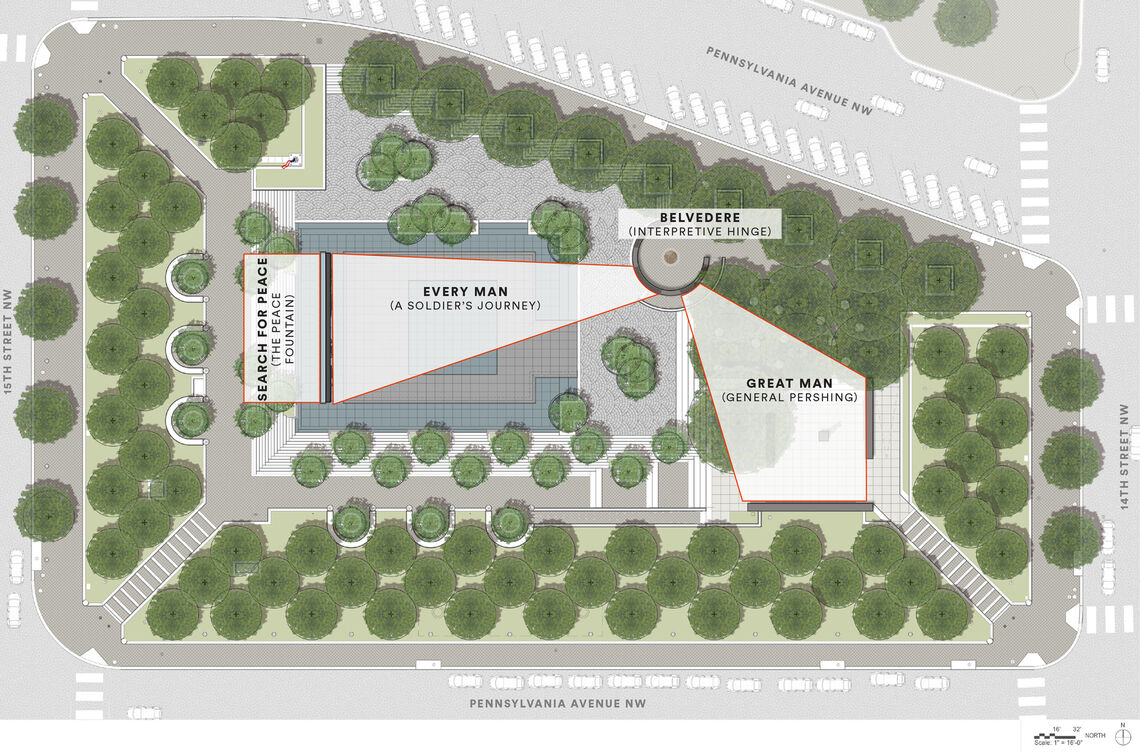
What Our Clients Say
"The World War I Memorial Park project has as many parts as a jigsaw puzzle. I am confident that this complicated project is in good hands with GWWO. Scratch that—it’s in the best possible hands. When you are creating a national memorial park in the heart of Washington DC, only the best will do. I have worked with the GWWO team personally and always have been impressed by their expertise, responsiveness, and design acumen. They are great partners."
—Libby O'Connell, Food and Cultural History, U.S. World War One Centennial Commission
